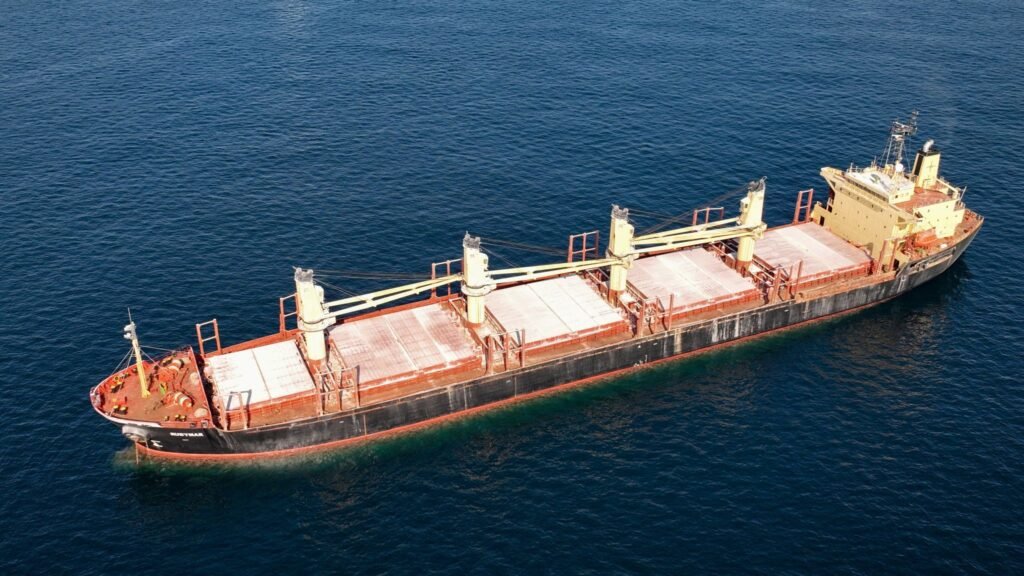What caused the UK ship to sink in the Red Sea?
A British-registered cargo ship, the “Rubymar,” recently sank in the Red Sea after a missile attack by Yemen’s Houthi rebels. This blog post dives into the events leading to the sinking and the potential environmental impact.
Missile Strike and Evacuation
On February 18, 2024, the Houthi rebels launched a missile attack on the Rubymar while it was sailing in the Red Sea. The missile struck the vessel, causing significant damage. Thankfully, the crew was able to evacuate the ship safely.
Environmental Concerns
The Rubymar was carrying over 22,000 metric tons of fertilizer at the time of the attack. Experts fear that the damaged ship and its cargo could pose a major environmental threat to the Red Sea. Here’s why:
- Pollution: Fertilizer contains nutrients that can trigger algal blooms. These blooms can deplete oxygen in the water, harming marine life.
- Red Sea Ecosystem: The Red Sea is a unique ecosystem known for its coral reefs and diverse marine life. A large-scale environmental disaster could have devastating consequences.
Salvaging Efforts and Tensions
Attempts were made to tow the damaged ship to a safe harbor. However, after taking on water for several days, the Rubymar ultimately sank on February 23rd.
The Houthi attack has further escalated tensions in the region. The Red Sea is a vital shipping lane, and this incident highlights the ongoing security concerns.
Uncertainties Remain
As of today, March 2nd, 2024, the full extent of the environmental impact remains unclear. Monitoring efforts are underway to assess the situation. Additionally, the Houthis have not yet commented on the attack and its aftermath.
Looking Ahead
The sinking of the Rubymar raises concerns about the safety of maritime traffic in the Red Sea and the potential for environmental damage. International cooperation will be crucial for mitigating the environmental impact and ensuring the safety of future voyages.
The MV Rubymar, a Belize-flagged Handymax-size bulk carrier, had a storied history. Built in 1997 by the Onomichi dockyard in Kobe, Japan, it underwent several name changes before being christened the Rubymar. In 2022, it played a crucial role in the Black Sea Grain Initiative, transporting 35,000 tons of wheat from Ukraine to Egypt during the Russian invasion of Ukraine.
The Fateful Journey
In February 2024, the Rubymar embarked on a voyage through the Red Sea, carrying a cargo of fertilizer from the United Arab Emirates to Belarus. Little did it know that this journey would thrust it into the heart of a conflict zone.
The Houthi Attack
On February 18, Yemen’s Houthi rebels launched a devastating anti-ship missile strike against the Rubymar. The impact caused severe damage, leaving the vessel vulnerable and adrift in the vicinity of the Bab el-Mandeb Strait, a critical waterway connecting the Red Sea and the Gulf of Aden.
Ecological Concerns
Rubymar’s predicament was twofold. First, it carried a cargo of fertilizer, which posed environmental risks. Second, fuel leakage from the ship further compounded the situation. An “oil slick” spanning 29 kilometers began to spread, creating an “ecological disaster” in the Red Sea. The potential for an “algal bloom” near the ship’s location added to the ecological concerns.
Salvage Efforts and Political Barriers
Despite plans to tow the Rubymar to safety, political barriers hindered salvage operations. The United States Navy offered assistance, but the nearest port in Djibouti refused to accept the ship due to the risk of explosion from its fertilizer cargo. The Houthi rebels, who claimed the ship sank almost immediately after the attack, remained unyielding.
The Sinking
After 12 days of abandonment, the Rubymar succumbed to the elements. It sank in stormy weather, becoming the first vessel destroyed by a Houthi attack during the crisis. Yemen’s exiled government lamented the loss, emphasizing the gravity of the situation. The ship’s sinking not only impacted regional stability but also had global implications for trade routes and insurance rates.
Conclusion
The Rubymar’s fate serves as a stark reminder of the ongoing conflict in the region. As ships alter their routes and insurers reassess risks, the Red Sea remains a contested waterway. The sinking of the Rubymar underscores the delicate balance between commerce, security, and environmental preservation in our interconnected world.
Ahmed Awad bin Mubarak, Yemen’s new prime minister, aptly summarized it: “It’s a new disaster for our country and our people.” Indeed, every ripple in the Red Sea carries echoes of strife and resilience, leaving us pondering the fragile threads that bind nations and oceans alike.

